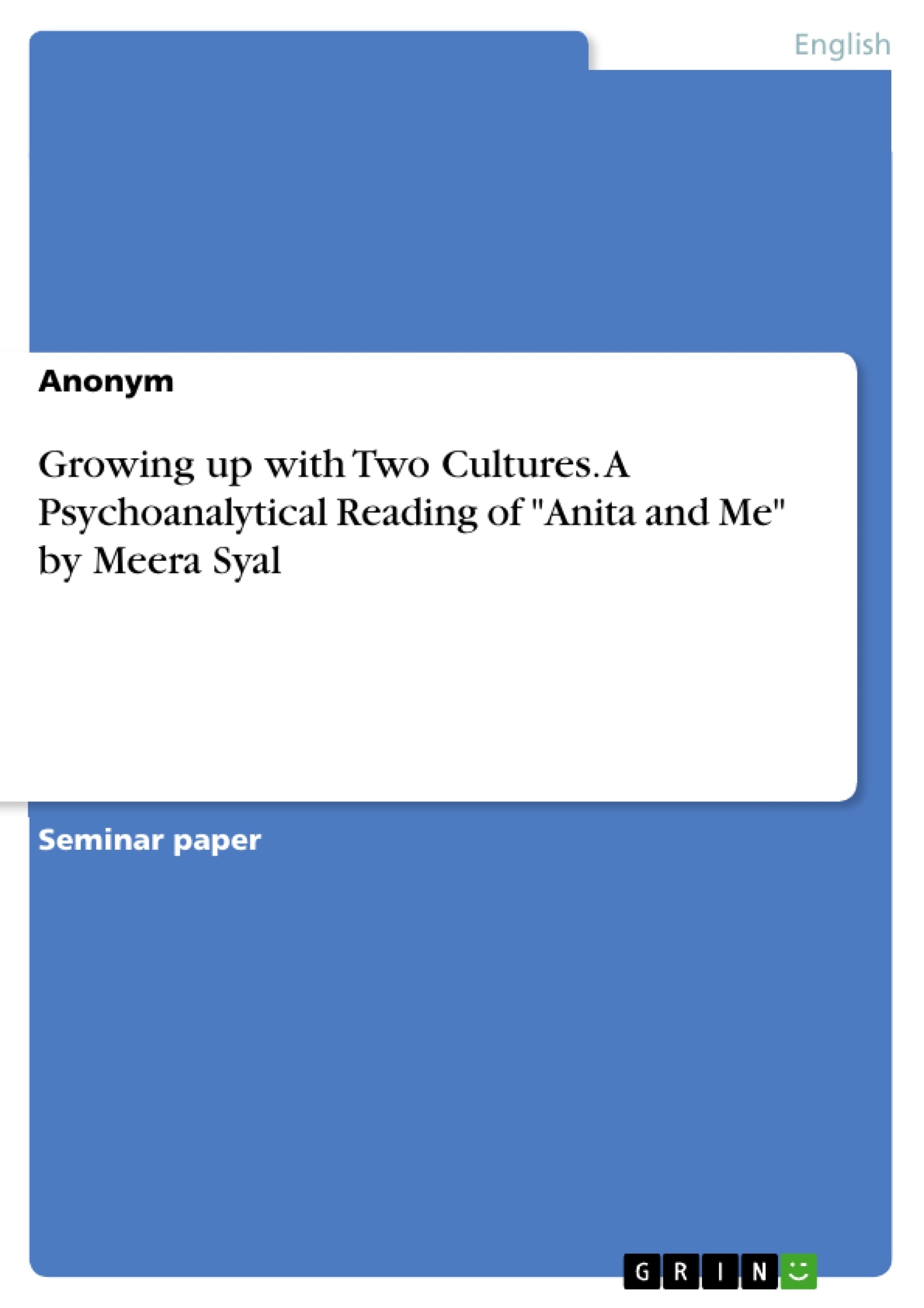My term paper is aimed at finding out, how Meena’s identity changes throughout the book and how growing up with two cultures affects this process. The analysis mainly sections into four parts: The first step will be to explain Freud’s fundamental theory, including his significant technical terms. After that, I will explain how the English and Indian culture are presented in the novel. Then I will transfer Freud’s hypotheses to Meena’s behaviour by finding appropriate examples in the novel. In the end I will complete my work by summing up my findings as well as reflecting them.
Table of Contents
- Introduction
- Human Identity in Theory
- Identity in Anita and Me
- British and Indian Identity in Anita and Me
- Meena's Identity
- Conclusion
- Bibliography
Objectives and Key Themes
This term paper aims to analyze the development of Meena's identity in Meena Syal's novel Anita and Me, particularly focusing on how growing up with two cultures influences this process. The analysis utilizes Sigmund Freud's psychoanalytic theory, specifically his concept of the "Provinces of the Mind" - the id, ego, and superego.
- The impact of biculturalism on identity formation
- The role of Freud's psychoanalytic theory in understanding Meena's character
- The interplay of British and Indian cultural influences on Meena's identity
- The development of Meena's identity throughout the narrative
- The concept of "balancing act" between cultural identities
Chapter Summaries
The introductory chapter establishes the context of Meena's identity as a bicultural individual, referencing her awareness of being neither fully British nor Indian. It also introduces the main question of the thesis: how does Meena's identity evolve within the context of her bicultural upbringing?
The second chapter provides an overview of Sigmund Freud's psychoanalytic theory, focusing on his concept of the "Provinces of the Mind." This includes explanations of the id, ego, and superego, their respective roles in personality development, and examples to illustrate their functions.
Keywords
This term paper focuses on the intersection of several key concepts: biculturalism, identity development, psychoanalysis, Freud's Provinces of the Mind (id, ego, superego), British and Indian cultures, and the novel Anita and Me by Meena Syal. Through exploring these concepts, the paper aims to understand how Meena's identity is shaped by her bicultural experiences.
- Quote paper
- Anonym (Author), 2017, Growing up with Two Cultures. A Psychoanalytical Reading of "Anita and Me" by Meera Syal, Munich, GRIN Verlag, https://www.grin.com/document/1321815



